
-56th in a Series-
Exit 23: Lake Jennings Park Road, Lakeside ~ Eddy Pump Corporation, El Cajon
By Donald H. Harrison
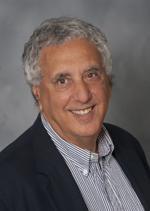
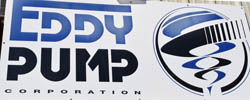
EL CAJON, California – A pumping system estimated to save the U.S. Navy millions of dollars over the equipment’s lifetime was invented by a Jewish surgeon with a PhD in fluid dynamics and a master’s in electro-optics who defected from the Soviet Union in the 1970s to become an American citizen.
Today, Dr. Harry P. Weinrib and his family operate the company, Eddy Pump Corporation, and all four of his children are deeply involved in building upon his legacy, both in business and as active members of the community.
Ben, who has a degree in mechanical engineering, is the executive vice president; Peter is the chief financial officer; Rebecca is chief legal counsel, and Kathy, who lives in Northern California with a husband she met on JDate, manages the company’s web presence. Eddy Pump Corporation is located about three miles from the Lake Jennings Park Road exit of Interstate 8 at 15405 Olde Highway 80.
Why did they locate there? I wondered. Peter told me that initially the company had located in Santee but when the Olde Highway 80 property became available, it was purchased because it was close to the family home in the Blossom Valley neighborhood.
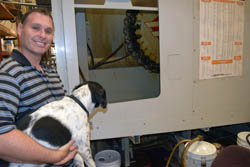
Peter said that after his father immigrated to the U.S., and did a surgical residency at UC Davis, his father practiced reconstructive and micro surgery at Rush Presbyterian Hospital in Chicago and tinkered, during his time off, in the basement of his home developing a pump that harnesses the eddy effect of a tornado instead of centrifugal force, which then was the most common technology.
After his father perfected the design in 1987, Peter said, he decided to retire as a surgeon. “Around the same time my parents (Harry and Eileen) took a vacation in San Diego and as they were driving out here in the mountains they found a piece of property for sale and decided that this is where they wanted to build their dream home.”
The residential property covers over four acres in the Blossom Valley area, which so delighted Eileen’s green-thumbed father, Carl Weinshenker, that he and his wife Esther traveled as often as four times a year from their retirement home in Florida to visit their daughter’s family. Carl planted 50 fruit and nut trees on the property.
“Today, there are only between 20-25 trees left on the property,” said Peter, adding that in the years since then he personally has planted numerous fruit trees at his own home in Santee. During his boyhood, Peter reminisced, he and “Zayde” Carl often fished at nearby Lake Jennings. Peter confided that one of the best ways to catch a bass at that lake is to use a Carolina rigging with an inflated night crawler as a power bait on a treble hook. “Ask at the bait shop at what depth they are hitting, and then set the leader and your power bait.”
Not long after the Weinribs settled in their “dream home,” a friend put Harry in touch with the U.S. Navy, which determined the Eddy Pump to be ideal for pumping sewage, grey water, and brine. Over 20 years later the Eddy Pump could be found in 2015 on almost all classes of U.S. Navy ships. An abstract of a research paper published in the Naval Engineers Journal stated that “the use of the new transfer pump system has been estimated to result in life cycle savings of about $3,000,000 per aircraft carrier…. Pump performance is noticeably improved as the new pump system can achieve flow rates three times as fast, with less power, than the previously installed centrifugal plant.” The report went on to say that using the Eddy system to pump brine for cooling nuclear reactors aboard the aircraft carriers would result in an estimated life cycle savings of about $2 million per aircraft carrier.
Asked to explain the difference between the Eddy Pump and a centrifugal pump, brother Ben, the mechanical engineer, gave a technical explanation. “The Eddy Pump uses hydrodynamic forces that are similar to the eddy current of a tornado. So the eddy pump creates a synchronized eddy current which agitates the material and brings it into the intake and out the discharge of the pump.”
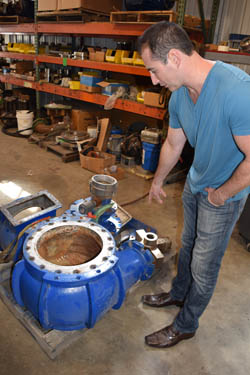
“The advantages of an eddy pump is that it can move higher viscosity material, higher specific gravity material, a high percent of solids material, and higher corrosive material while having less negative effects on the pump. That means the pump requires less corrective action and less maintenance costs over its life,” Ben added. “So when you are pumping oil, or heavy mining materials, or corrosive chemicals, the Eddy pump will last significantly longer than a displacement pump or a centrifugal pump, and be able to do it at a higher production, thus saving the customer significantly more money in the long run.”
The Eddy Pump, I learned, has been used in a variety of locales for an interesting array of projects. Viewers of the Discovery Channel may be familiar with one of its shows, Bering Sea Gold, which follows miners on their quest to mine gold from the bottom of the Bering Sea in Nome, Alaska.
Eddy Pump was contacted by the show in order to demonstrate the capabilities of its remote-operated submersible dredge (sub-dredge), which is equipped with lights and cameras and can be operated by someone watching a monitor. As portions of the Bering Sea was frozen over in March 2015, a hole was carved in the ice and the sub-dredge was lowered to the bottom of the sea to begin pumping. An Eddy Pump engineer was on site to observe. After a month’s use, the sub-dredge outperformed all other equipment, according to Ben. It now will be returning to Nome for the spring/ summer season.
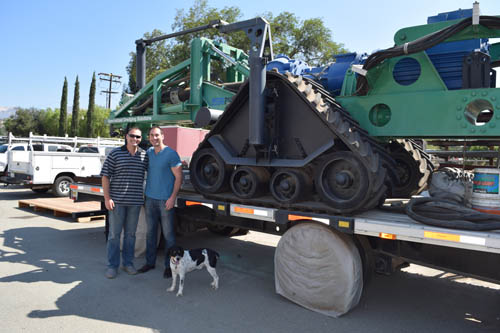
The pump pulls up “rocks to a certain diameter, the dirt, everything that can be sucked up,” said Peter. The material is piped up to the barge, “where there will be a sluice box. The heavier gold will be collected and everything else will be shot back into the ocean.”
Another notable example of how the Eddy Pump can be utilized came after a mysterious black “blob” appeared in 1985 at the bottom of the St. Clair River which demarcates the border between Sarnia, Ontario, Canada and Port Huron, Michigan.
The “blob,” as the phenomenon became known, had resulted from a spill of 35,000 liters of perchloroethylene—an industrial dry-cleaning solvent—into the river, where it mixed with other chemicals that had layered over the years on the river bed. The mixture resulted in the creation of tarry blobs, and traditional hydraulic and mechanical dredging only served to disperse the mixture over a longer portion of the river. Subsequently, Eddy Pump’s former subsidiary company, Tornado Motion Technologies, was awarded a contract for environmental dredging services.
“We customized our dredge for the application,” said Peter. “We went in there and it took three years, but when it was done, they were very happy with the job and it was a big success.”
Closer to home, said Ben, there was a project funded by the state and federal governments for a habitat restoration in Imperial Beach, a project that involved dredging a former salt mine to very strict specifications. “We needed to cut 8:1 slopes underwater, which is an impossible thing for conventional dredging equipment to do but with our Programmable Logic Controlled (PLC) ground pressure technology, we were able to pre-program it so that the head of the dredge would exert only x amount of ground pressure. Essentially we automated it for the operator to make those cuts without over-gouging into the material.”
The company also works with some of the largest irrigation districts in the U.S. Eddy Pump has completed projects for Imperial Irrigation District (IID) and many others. Currently it is working with districts all through Arizona and California.
“There are concrete-lined canals,” said Ben, “and there is sediment built up, so they want to remove the sediment without having an effect on the concrete liner and not wasting too much of the water. So with our remote-operated submersible dredge, you don’t need to put anybody into the water, and you don’t have to shut down operations. You essentially lower this dredge on its own and it drives itself into the canal and with an operator on shore using cameras and acoustical positioning, he can precisely move around the canal and pump the material out.”
On the other side of the world, in Abu Dhabi, the pump was utilized to transfer sand used in the construction of an artificial island.
I asked if the fact that the Weinribs are Jewish raised any issues in Abu Dhabi, which is an Arab emirate. “None at all,” responded Peter. The three non-Jewish engineers who were sent on that job were treated royally. The Weinribs were too busy with other business to even consider participating in the project on site, Peter said.
The company currently engineers, manufactures, sells, rents and provides turnkey project solutions.
In what Ben described as “completing the circle,” in reference to his father’s surgical career, the company now is developing a miniature pump which cardiovascular surgeons hope will be able to break up and remove plaque buildup and blood clots in veins and arteries.
While Eddy Pump does not have any projects in Israel, family members have traveled there several times. Ben, who serves as president of the Young Leadership Division of Friends of the Israel Defense Forces, recently went there with about some 20 representatives of other non-profit organizations. His sister, Rebecca, also attended. She is the co-founder of “The Animal Pad,” an all-breed dog rescue operation that helps dogs from all over Southern California and Mexico. Organized by the Next Gen division of the Jewish Federation of San Diego County, the mission’s goal “was to do collaborative work together and get a better understanding of what everyone is doing in the community, and hopefully create new ideas.”
During the trip, in which the group also visited Berlin, Germany, the leaders met with an Israeli non-profit organization called “Save a Child’s Heart” which offers surgeries to children with congenital heart defects in the Palestine territories, African and other third-world countries. Save a Child’s Heart transports the children and one parent to Israel, where it has “a facility to take care of them and house them, and then provides surgeries that would otherwise cost $100,000 to $300,000 in other countries.”
Touched by the project, Ben and Rebecca and some of their travel companions decided to raise $10,000 to pay for the surgery needed by a one-year-old Ethiopian girl. For the FIDF meanwhile, Ben is planning another mission to Israel in which two members of the U.S. Congress will be escorted to Israeli military bases to meet with generals to get an up-close look at Israel’s security preparations.
Peter said he supports both the FIDF and AIPAC, and while he didn’t go on that mission, he’s been to Israel twice and expects to go again next year to attend a friend’s wedding.
*
From Exit 23, follow Olde Highway 80 about three miles to Eddy Pump plant.
*
Harrison is editor of San Diego Jewish World. You may contact him at donald.harrison@sdjewishworld.com